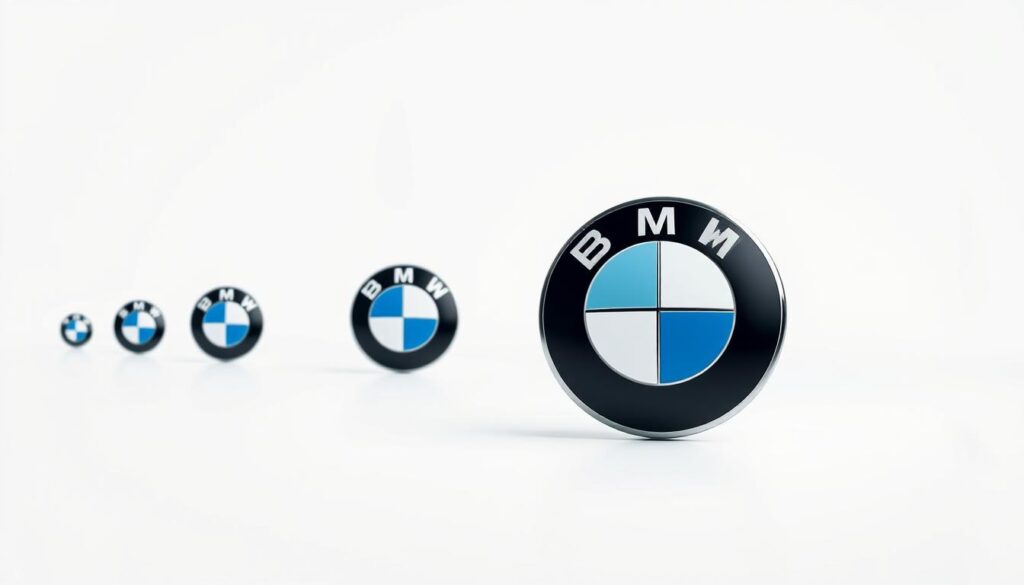Fully Explained: What Does BMW Stand For? Meaning & History
Table of Contents
Imagine driving down a highway in a BMW. The car’s sleek design cuts through the wind, showing off its engineering and quality. Every car lover knows BMW, but not many know its deep history.
BMW is more than a luxury car maker. It started as a small aircraft engine company in Germany. Now, it’s a global leader in luxury and performance.
This article will tell you the story of BMW. We’ll explore how it went from making aircraft engines to becoming a top car brand. We’ll look at its beginnings, its famous acronym, and how it became known for engineering excellence.
Get ready for a journey through BMW’s amazing growth. We’ll uncover the details that made this brand a car icon.
The Origin Story: BMW’s German Heritage
BMW is a top German car maker with roots in Munich, Germany. It started in a time of big tech changes. This showed the engineering skill that would shape its future.
BMW began as a maker of aircraft engines, not luxury cars. This showed its innovative spirit. This spirit has become a key part of its identity.
From Aircraft Engines to Luxury Cars
BMW changed from making aircraft engines to famous cars. This change shows its ability to adapt and excel in engineering. After World War I, it used its mechanical skills to start making cars.
- Founded in 1916 as a manufacturer of aircraft engines
- Transitioned to motorcycle production in 1923
- Entered automobile manufacturing in 1928
The Munich Connection
Munich is key to BMW’s identity. Where is BMW from? Munich, Bavaria, Germany. The city is BMW’s global headquarters. It shows the brand’s German roots and focus on precision.
Early Manufacturing Roots
BMW’s early focus was on quality and new ideas. It quickly became known for its advanced engineering and detailed design. These qualities have made German cars famous for many years.
BMW Meaning: Decoding the Famous Acronym
The BMW meaning has long been a topic of interest for car lovers. So, what does BMW stand for in English? It stands for Bayerische Motoren Werke, which means “Bavarian Motor Works” in English. This name holds more than just a company’s name.
Looking into the BMW meaning, we find its roots in Bavaria, a German state famous for its engineering skills. Let’s dive into what makes up this famous acronym:
- Bayerische: Shows the Bavarian region of Germany
- Motoren: Points to the company’s focus on motor technology
- Werke: Means the manufacturing works or production facilities
The name BMW tells us about the company’s history and its focus on engineering. It’s not just a name—it’s a symbol of innovation and precision in the automotive world.
| Language | Full Name | Meaning |
|---|---|---|
| German | Bayerische Motoren Werke | Bavarian Motor Works |
| English | Bavarian Motor Works | Regional Automotive Manufacturer |
Many myths surround the BMW acronym, but it’s actually simple. It shows the company’s roots in Bavaria and its dedication to motor engineering. The name captures a brand known for its precision, performance, and cutting-edge technology.
Evolution of the BMW Logo and Brand Identity
The BMW logo is more than just a symbol. It tells a story of a long history in the automotive world. Exploring the BMW logo reveals what the brand stands for.

Since its start, BMW’s visual identity has changed in exciting ways. Each small change in the logo shows the brand’s focus on precision and innovation.
The Truth Behind the Propeller Myth
The BMW logo is not about an aircraft propeller, despite what many think. This myth comes from BMW’s early days making aircraft engines. The circular shape actually stands for:
- The Bavarian flag colors of blue and white
- The company’s deep roots in Munich
- A modern symbol of movement and precision
Color Symbolism in BMW’s Emblem
The blue and white parts of the logo mean a lot. These colors tie back to Bavaria, where BMW started. The blue and white pattern shows the company’s pride and heritage.
Logo Transformations Through Decades
BMW’s logo has changed over time, keeping its core but updating its look. The main changes are:
- 1917: First black and white circular design
- 1933: Introduced the blue and white colors
- 1997: Added a 3D effect to the emblem
- 2020: Made a simpler, flat design for digital use
Each change in the logo shows BMW’s mix of tradition and modern design. It shows the brand’s dedication to innovation and its deep history.
BMW’s Journey from Aviation to Automotive Excellence

BMW started as a maker of aircraft engines and grew into a top car brand. This change shows how they adapted and innovated. As a German company, BMW used its engineering skills to move from the skies to the roads.
Their work in aviation helped shape their car designs. In the early 1900s, BMW made advanced aircraft engines. These engines laid the groundwork for their car innovations.
- 1923: BMW produced its first motorcycle, the R32
- 1928: First automobile production began
- 1930s: Developed breakthrough engine technologies
So, what does BMW stand for? Bayerische Motoren Werke AG, or Bavarian Motor Works. This name shows their German roots. Moving from making planes to cars was a big step for German engineering.
“Innovation distinguishes between a leader and a follower.” – BMW Design Philosophy
BMW’s car journey was marked by using aircraft precision in car making. They focused on lightweight materials and engine efficiency. This made them a top car brand quickly.
By the mid-1900s, BMW became a world-known luxury car maker. They set new standards in car design and performance.
Understanding BMW’s Global Impact and Presence
BMW has grown from a German maker to a global leader in cars. It started in Munich and now reaches markets worldwide. This shows its huge growth and influence globally.
The company is now found all over the world, not just in Germany. It has factories on many continents. BMW shows it cares about the world market and making cars locally.
Manufacturing Facilities Around the World
BMW has plants in important places:
- Germany (main factory)
- United States (Spartanburg, South Carolina)
- China (Shenyang)
- Brazil (Araquari)
- United Kingdom (Goodwood and Oxford)
Economic Influence and Market Position
BMW has a big economic effect. It makes billions each year and has over 120,000 workers. Its luxury segment dominance makes it a big name in cars worldwide.
Cultural Impact of the Brand
Beyond making cars, BMW stands for top engineering and luxury. It’s known for its precision, speed, and design. BMW has become more than a car brand; it’s a symbol of style and innovation.
“BMW isn’t just a car manufacturer; it’s a statement of technological innovation and cultural sophistication.”
Modern BMW: Innovation and Future Direction
BMW is leading the way in car excellence with new innovations. They’re moving beyond just making cars. Their focus is on electric cars, digital connections, and green mobility to solve global problems.
The company is putting a lot into electric car development. Their i-Series shows BMW’s commitment to new tech in cars. It’s a big step towards changing how we travel.
- Electric Vehicle Lineup Expansion
- Advanced Driver Assistance Systems
- Sustainable Manufacturing Processes
- Digital Integration Technologies
BMW has set clear goals for the future:
| Technology Focus | Key Objectives |
|---|---|
| Electric Mobility | 50% Electric Vehicle Sales by 2030 |
| Autonomous Driving | Level 3-4 Automated Driving Capabilities |
| Carbon Neutrality | Zero Emissions Manufacturing by 2050 |
BMW’s drive for innovation goes beyond just making cars. They invest a lot in research and development. This keeps them leading in car tech while keeping their high standards of performance and luxury.
“Innovation distinguishes between a leader and a follower.” – BMW Engineering Philosophy
Conclusion
The story of BMW is more than just a car brand. It shows the power of engineering and cultural importance. BMW started making aircraft engines and now leads in luxury cars, always innovating and precise.
BMW’s meaning goes beyond an acronym. It has grown from a small Munich maker to a global luxury leader. Its focus on technology and design makes it a top choice in luxury cars, always pushing limits.
BMW’s history gives us clues about its future. Its ability to change, innovate, and keep its values has kept it successful. BMW keeps shaping the car world with new electric tech and its engineering legacy.
As cars change, BMW stays ahead in tech and design. Its move from aircraft engines to luxury cars is a success story. It shows German engineering’s big impact and lasting quality and innovation.

